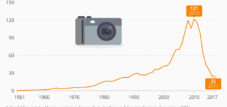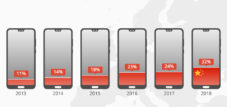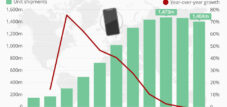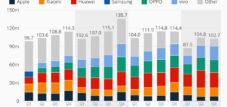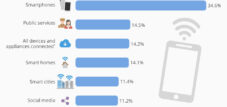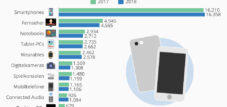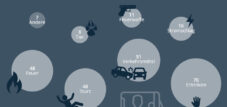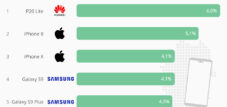Smartphone vs. digital camera
Language selection 📢
Published on: November 5th, 2018 / Update from: November 5th, 2018 - Author: Konrad Wolfenstein
+++ Digital cameras are selling worse and worse +++ More and more photos thanks to smartphones +++ Selfies are far deadlier than sharks +++ Are smartphones destroying the camera market? +++ Slow-moving digital camera +++ The victims of the smartphone boom +++
Digital cameras are selling worse and worse
More and more photos are being taken - but the digital camera has long since been knocked off its throne as the most popular source of images by smartphones. As the infographic shows, sales of digital cameras have fallen significantly in recent years. The number of digital cameras in German households is also continually decreasing. Apparently, people who have thrown away their cameras often don't buy a new one. The industry is starving - at least action cams and the revival of the instant camera are providing small rays of hope.

More and more photos thanks to smartphones
Bitkom , humanity will take 1.2 trillion photos this year. The number of pictures taken has risen sharply in recent years. The increasing popularity of smartphones is responsible for this development. They are said to be responsible for 85 percent of all photos. Conventional digital cameras, on the other hand, only have a market share of 10.3 percent.

Selfies far deadlier than sharks
Priceonomics, 28 people died in 2015 related to selfies. This means that the self-portraits that are so popular with many smartphone users are significantly more dangerous to life and limb than, for example, sharks. Just eight people fell victim to the dreaded predatory fish. The ranking of deaths as a result of erotic self-strangulation is listed - which certainly does not meet strictly scientific standards. The most common selfie-related causes of death are falls from heights, drowning and trains.

Are smartphones destroying the camera market?
In 2010, the companies organized in the Camera & Imaging Products Association (CIPA) (including Olympus, Casio, Canon) sold 121 million photo cameras worldwide. It was the end of a development that until then had practically only taken one direction. However, at this point, the end of this decade-long upward trend had already been sealed. In 2007, Apple brought the first iPhone onto the market. The two-megapixel digital camera installed here only delivered modest photo quality, but the concept caught on and the cameras kept getting better. The current smartphone cameras offer performance that simply makes purchasing an additional compact camera unnecessary. At least that's how consumers see it: in 2017, CIPA companies only sold 25 million digital cameras.

Slow-moving digital camera
“The best camera is the one that's with you,” the famous US photographer Chase Jarvis once said. As a rule, these days this is the camera on your own smartphone. This development is highly problematic for manufacturers of digital cameras. When Apple's iPhone, the first modern mobile phone with a touchscreen, came onto the market in 2007, digital cameras sold brilliantly. The manufacturers organized in the Camera & Imaging Products Association (including Olympus, Kodak, Nikon) sell over 100 million devices - mostly digital compact cameras - every year. Last year, however, there were only around 35 million. A new negative record is looming for 2016: between January and July, consumers worldwide bought just 13 million digital cameras.

The victims of the smartphone boom
In 2007, Apple brought the first iPhone onto the market, helping the smartphone achieve its breakthrough. Since then, Germans alone have bought over 160 million of the touchscreen phones. But the smartphone has been more than just a cell phone from the start. Watch videos, listen to music, take photos, navigate a foreign city and surf the Internet; The mobile all-rounders do all this and much more. On the other hand, things are looking less rosy for all the devices whose functions the smartphone combines. Only 686,000 MP3 players were sold in 2017. In the year the first iPhone was released there were around eight million. Digital camera sales have also declined similarly.

If you look at the trend on Google, the once maximum value of 100 for popularity has now fallen to 3:
Stagnation can be found in the term “smartphone”:
This is where it gets interesting to go deeper into the analysis.





